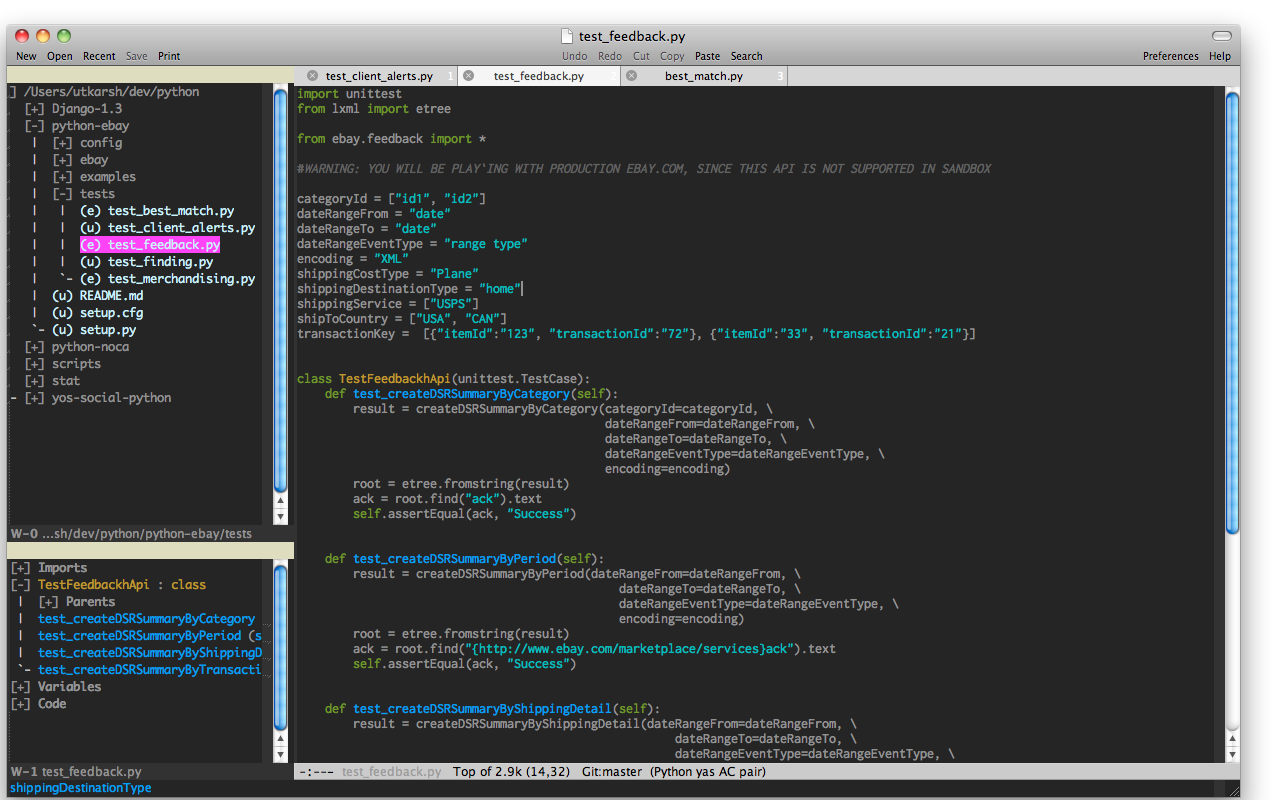Python For Mac
Downloading Python
- Python For Mac Tutorial
- Using Python On Mac
- Python For Machine Learning
- Download Anaconda Python For Mac
- Python For Mac Download
The methods for installing Python and setting up Python projects outlined below are available only via the command line. We'll provide the exact the commands you will need to execute, along with the proper arguments and options. You're encouraged to copy this input from the code snippet boxes, like this one: ls -a. Python for Mac OS X. Python comes pre-installed on Mac OS X so it is easy to start using. However, to take advantage of the latest versions of Python, you will need to download and install newer versions alongside the system ones. The easiest way to do that is to install one of the binary installers for OS X from the Python Download page. Installers are available for the latest Python 3 and Python 2 releases that will work on all Macs that run Mac OS X 10.5 and later.
Python For Mac Tutorial

Before you start, you will need Python on your computer, but you may not need to download it.
Check that you don't already have Python installed by entering python in a command line window. If you see a response from a Python interpreter it will include a version number in its initial display. Generally any recent version will do, as Python makes every attempt to maintain backwards compatibility - with the exception that Python 2.x and Python 3.x have some intentional differences.
On Windows, try py first - this is the relatively recent Python Launcher, which has a better chance of avoiding some of the path problems that might occur because on Windows programs don't install into any of the small set of common locations that are searched by default. The Python launcher can also let you select any of the various versions you may have installed from a single command.
If you need to install Python, you may as well download the most recent stable version. This is the one with the highest number that isn't marked as an alpha or beta release. Please see the Python downloads page for the most up to date versions of Python. They are available via the yellow download buttons on that page.
Windows
The most stable Windows downloads are available from the Python for Windows page. On Windows you have a choice between 32-bit (labeled x86) and and 64-bit (labeled x86-64) versions, and several flavors of installer for each. The Python core team thinks there should be a default you don't have to stop and think about, so the yellow download button on the main download page gets you the 'x86 executable installer' choice. This is actually a fine choice: you don't need the 64-bit version even if you have 64-bit Windows, the 32-bit Python will work just fine.
Season with seasoned salt and pepper. Roux recipe for mac and cheese. Add the cheeses, egg, and heavy cream.
Quickbook for mac review. If you're running Windows XP: a complete guide to installing ActivePython is at Python on XP: 7 Minutes To 'Hello World!'. ShowMeDo has two videos for downloading, installing and getting started with Python on a Windows XP machine - this series talks you through the Python, ActivePython and SciPy distributions. Note that the python.org releases only support versions of Windows that are supported by Microsoft (at the time of the release), so no recent release from python.org can be used on WIndows XP.
Using Python On Mac
Mac
Python For Machine Learning
See the Python for Mac OS X page. MacOS since 10.2 (Jaguar) includes a system version of Python, but it is best not to consider this the Python to use for your programming tasks - install a current Python version instead. 10.15 (Catalina) is the last MacOS to include a default system Python, as Apple has now deprecated this.
Linux
For Red Hat, CentOS or Fedora, install the python3 and python3-devel packages.
Download Anaconda Python For Mac
For Debian or Ubuntu, install the python3.x and python3.x-dev packages.
For Gentoo, install the '=python-3.x*' ebuild (you may have to unmask it first).
Python For Mac Download
For other systems, or if you want to install from source, see the general download page.